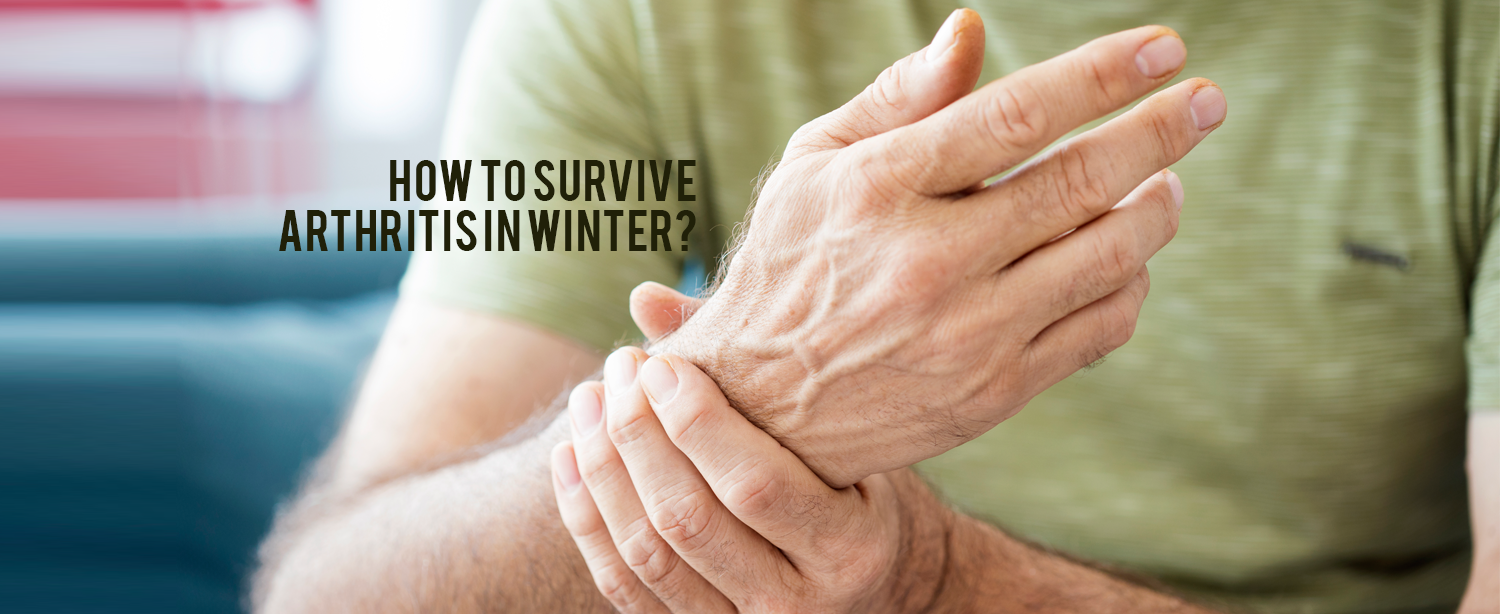The word arthritis literally means inflammation of a joint. The most common type, osteoarthritis, involves degeneration of the particular cartilage protecting the bone ends within a joint. Without cartilage protection, tendons and ligaments have to work harder, and severe loss of cartilage can lead to bone rubbing on the bone, causing friction and eventual swelling and inflammation.
Arthritis can also rear its ugly head when parts of a joint are wrongly identified as a ‘foreign’ threat and are attacked by immune processes – which is the case with rheumatoid arthritis. While far more common in older age groups, anybody, even children, can get arthritis.
Arthritis worsens in winter
During the winter season, joint pains and stiffened muscles are the most common health problem plaguing the lives of older people. There is a 50 per cent spike in the number of senior citizens seeking treatment for bone and joint problems during winter. For many Rheumatoid arthritis patients, pain, swelling, stiffness, fatigue and other common rheumatoid arthritis symptoms are harder to control during the winter. Some people feel more joint pain, as the cold weather sets in.
Why this happens
Here are a few reasons why arthritis flares up in winter:
- The pain receptors become more sensitive during the winters.
- The drop in the atmospheric pressure causes painful joints. When pressure decreases, tissues swell, building tension between joints, causing pain.
- There are more muscle spasms in colder temperatures, which worsens the pain and stiffness the joints.
- The cold reduces the blood circulation to the fingers and toes, which amplifies arthritis pain.
- Less sunlight during winters means lower vitamin D levels and leads to weakened bones and joints.
How to find relief in the winters
1. Dress warmly – Depending on the climate in your city, choose to wear warm winter clothes or dress in layers. Always ensure that you cover your hands, knees, legs and all arthritis prone areas.
2. Hydrate – Staying hydrated helps keep you more active. Even mild dehydration might make you more sensitive to pain.
3. Exercise – While it’s understandable to want to avoid winter chill, people with joint pain should still stay active. Exercise indoors to improve the symptoms like joint stiffness and muscle weakness.
4. Keep yourself warm and cosy – Use an electric heating pad, hot water bag or an electric blanket to keep yourself warm while resting or sleeping. Heating pads are more useful for localized areas where joints have become stiff and painful from the cold weather.
5. Let warm baths comfort you – Swimming in a heated pool is both great exercise and soothing to your joints. You can also get great relief from warm baths.
6. Supplement Vitamin D – Low levels of vitamin D might play a role in how sensitive you are to arthritis pain. Being deficient in vitamin D also raises the risk for osteoporosis. Talk to your doctor about the best supplement options.
7. Increase your intake of omega-3 fatty acids – Omega-3 fatty acids are highly beneficial in reducing the inflammation level in your joints. Include avocado, flaxseeds, walnuts and fish in your diet.
Enjoy winter while taking the above precautions for Arthritis. If you are facing extreme discomfort in your joints due to arthritis, do consult our experts at our Centre for Bone and Joint. Please find below link:
https://www.kokilabenhospital.com/departments/centresofexcellence/centrefor_bonejoint.html


